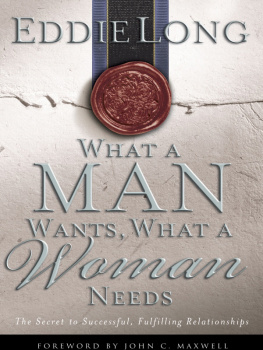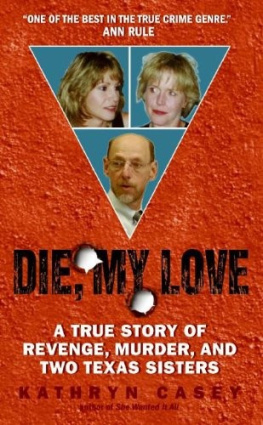Who can find a virtuous woman, for her price is far above rubies. The heart of her husband doth safely trust in her, so that he shall have no need of spoil.
P ROVERBS 31:10-11
M usic filled the spacious home in the upscale suburb of Austina religious hymn, expertly played on a perfectly tuned piano.
The sun was setting when the slender blond woman began practicing the piece on the pale yellow, baby grand piano. Her deftness at the keyboard was almost professional; but she devoted her musical talent, as with many of her other well-rehearsed skills, to serving others. In the case of her music, it was a weekly recital, played for elderly residents of a nearby nursing home. She spoke of her volunteer work as my ministry.
Playing for the old folks was the least of her ministrations. She was also a Sunday school teacher at an evangelical church and a mentor to young wives and soon-to-be married women who wanted to create godly marriages and perfect Christian homes. Though she was middle-aged, her eager young domestic disciples considered her one of them. She stayed youthful by keeping herself well groomed and physically fit. She was not beautiful in the classical sense, but radiated a bubbly personality and vitality that made her pertly attractive.
As she focused attention on her playing, there was no reason to be distracted by the occasional rattling of the windows from the gusting winds of a cold front moving into the area. These familiar noises, and the swelling chords of her own music, most likely muffled any sounds made carelessly by the stealthy figure approaching slowly from behind her. She was alone, she thought. After an early dinner, her husband had returned to the office to finish a project, due the next morning.
She was accustomed to his demanding work schedule, the long hours and frequent travel required by his steady climb up the corporate ladder to a chief executive position. After his years of diligent toil, supported by what their friends described as the perfect marriage, the family seemed to have attained the American dream.
Their lives in the affluent, professional circles of Austin reflected that success. The wife had made their house the shining centerpiece of her life and marriage. On March 6, 1996, everyone who knew her would have sworn that no place on earth could be safer than this idyllic home.
Even the person stalking across the living area toward the woman raptly playing the piano would have noticed the neatness of the rooms. Everything was in order. There was no clutter here.
An observer would have thus found it almost preposterous to see that the intruder carried a foot-and-a-half length of two-inch industrial pipe. Such an odd piece of plumbing had no practical use anywhere on this property. Cap seals screwed on both ends made it look more like a component designed for bomb-making than for any household purpose.
The ugly gray pipe may have been out of place among the fine bric-a-brac decorating the room, but it had its purpose now.
The intruder came closer, towering above the woman seated low on the piano bench. The heavy pipe arched upward and then swung sharply into the right side of the womans head. The powerful blow was delivered with such force that it fractured her jaw. It tore an earring loose, sending it flying, and severed the right earlobe holding the jewelry. As her right hand went up, she was slammed again.
She was a fairly petite woman, five feet six and a half inches tall, and weighed 120 pounds. But even had she been larger or more athletic, the well-placed blow would have rendered her helpless to fight back. She recoiled from the force of the attack, her wound splattering a thin spray of blood on the ivory keys. More blows rained down on the back of her head.
As she fell from the bench to the floor, the attacker repeatedly pounded her, some of the blows glancing off other parts of her bodyher wrist, her thigh, her shoulder and foot. Though the woman lay motionless, the assailant continued to strike her. One blow smashed the base of her skull, causing a bit of bone to protrude through the scalp.
The body was lying in front of the piano, blood oozing into the carpet. The killer went to the kitchen. On the counter, a butcher block held a set of cutlery.
Armed with a carving knife, the assailant returned and poked the point of the knife twice into the flesh of her back, to see if any life could be stirred from the now still corpse. Then the killer rolled her over and began an even more frenzied attack, stabbing and slashing at her upper chest, neck, and throat. Her body took eight knife wounds, two so deep they went through her chest. Her throat was slashed.
After the assault, the killer walked back into the kitchen and washed off the pipe and the knife. Expensive jewelryincluding a diamond necklace, a diamond tennis bracelet, and a two-karat diamond ringwas removed from the womans body.
As she lay dead in the large living area, her belongings were ransacked. Jewelry boxes from the master bedroom were emptied into the sunken bathtub and strewn about the main bathroom. It was a hodgepodge of baubles. There was little of value, mostly costume jewelry and small souvenirs.
A black and green garbage bag was used to stow the few pieces of real jewelry, the pipe, the kitchen knife, and five surgical latex gloves.
The killer left under cover of darkness, as lights began to appear through the picture windows of the neighboring homes. A winter storm was now howling in full fury down the usually quiet, tree-lined street, with winds gusting to thirty miles an hour. No neighbor ventured out into the well-groomed yards in such a gathering chill. No one saw the intruder enter. No one saw the killer leave.
After the husband returned home to find the body, and the police had arrived, alarm spread quickly down the block. The savagery of the murder, the gross overkill, bore the hallmarks of a deranged maniac. Nothing like it had happened in recent memory in this almost crimeless suburban neighborhood.
I n the early days of Austin, unsolved murders abounded in this area south and west of the river, a place where renegades, moonshiners, and transient cedar-choppers had made their camps. Gradually, civilization came, with the demands for growth turning this wilderness area into a neighborhood of low-cost homes. Still, the settlers living in genteel poverty maintained a degree of harmony with the natural environment. It was only more recently that the lush, natural surroundings had been drastically altered to make way for rapid population expansion and economic progress.
Old-timers from the neighborhood whispered that nothing good would come of cutting down an enormous live oak tree that had become a local landmark. For generations the tree had been home to a ghostly female apparition, undoubtedly the victim of some forgotten violence. The gnarled old tree had weathered much during the century and a half it took to transform Austin from the sleepy capital of frontier Texas to a modern mecca for international microchip and personal-computer makers. But like so much else that had made Austin quaint, the tree and its ghostly spirit fell before modernitys bulldozers when the vanguard of the great boom years arrived in the early 1980s with the high-technology revolution.
In the recent past, heirs of the early squatters, who had first claimed the home sites in this part of town more than a hundred years earlier, were gradually forced out of their comfortable but dilapidated neighborhood by nothing more sinister than soaring land values. The land immediately across the Colorado River from bustling downtown Austin had grown too valuable for the cluster of small whitewashed houses in the neighborhood surrounding the ancient tree. When the well-compensated owners left the area, and the giant oak tree was felled for a new road, its secrets disappeared, along with the oral histories of the area.













